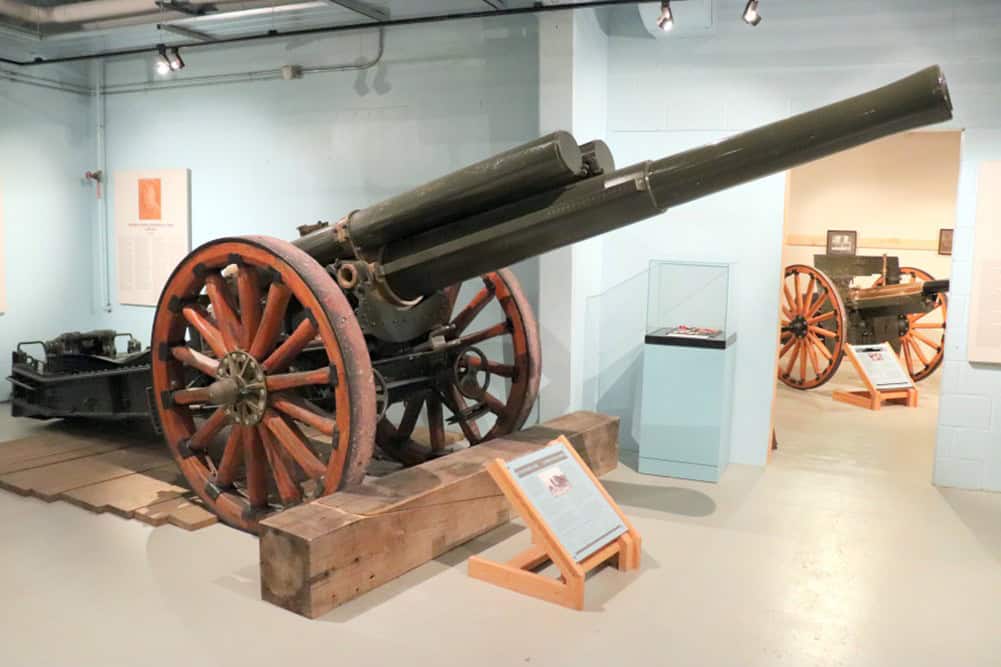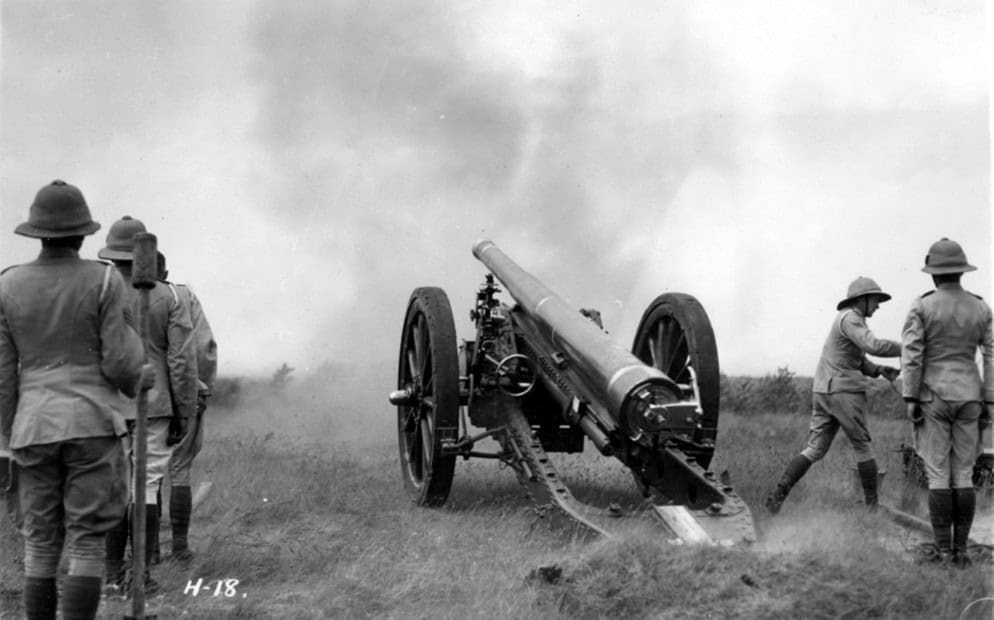The 60 Pounder Gun
While the 60 pounder gun covers a lot of floor space at the RCA Museum, it needs to receive the attention it deserves. Years ago, our 60 pounder gun must have been placed on the range because there were small-arms strikes on the barrel. Today, visitors walk under the gun’s barrel as they exit the Heritage Gallery and enter the First World War Gallery. The Canadian Militia used the 60 pounder extensively during the First World War and interwar.
The British developed the 60 pounder gun out of necessity. During the Boer War (1899 to 1902), the Boer’s heavy field guns outgunned the British artillery. While the British deployed the naval 4.7 inch gun with an ad-hoc carriage during the war, it proved largely ineffective against their adversary’s technologically superior long-range artillery systems. From their battle experience, the British learned to increase their firepower to fight at ever-increasing distances.

Photo of the 60 pounder in the RCA Museum.
Early in 1903, the Ordnance Committee in London approved portions of an Armstrong Co.-designed 60 pounder gun that could fire a heavy projectile, including gas, high explosive and shrapnel rounds, at least 10 kms. The Canadian Militia ordered twelve 60 pounders in late 1903 and started to receive them in 1908. The Canadian Militia used the gun with a limber, two ammunition wagons, ten gunners, eight drivers, and upwards of 18 horses. The 60 pounder gun was one of the first modern heavy guns with hydraulic recoil mechanisms allowing it to fire continuously without reaming.
During the First World War, Canada deployed twelve 60 pounders on the Western Front (six in the 1st Canadian Heavy Battery and six in the 2nd Canadian Heavy Battery). The gun proved its worth in counter-bombardments, including with gas shells from 10 kms to 15 kms in range. For example, during the bombardment phase of Vimy Ridge, Canadian Gunners fired the gun day and night for three weeks. The 60 pounder, with one thousand other guns, helped eliminate most of the German defences, making it possible for Canadian soldiers to take the ridge.

Twelve 60 pounder guns returned to Canada after the First World War. Of note, the 67th Brigade in North Russia operated three 60 pounders in 1918-19. The Canadian Militia used these guns throughout the Interwar Period, as shown in the photo. In 1939, Canada still had twelve 60 pounders in operation. For over thirty years (1908 to 1941), the 60 pounder remained in service, providing a long-range counter-bombardment function, then in a training role until 1944. The 4.5 inch howitzer and the 5.5 inch howitzer replaced the 60 pounder.
By Andrew Oakden
